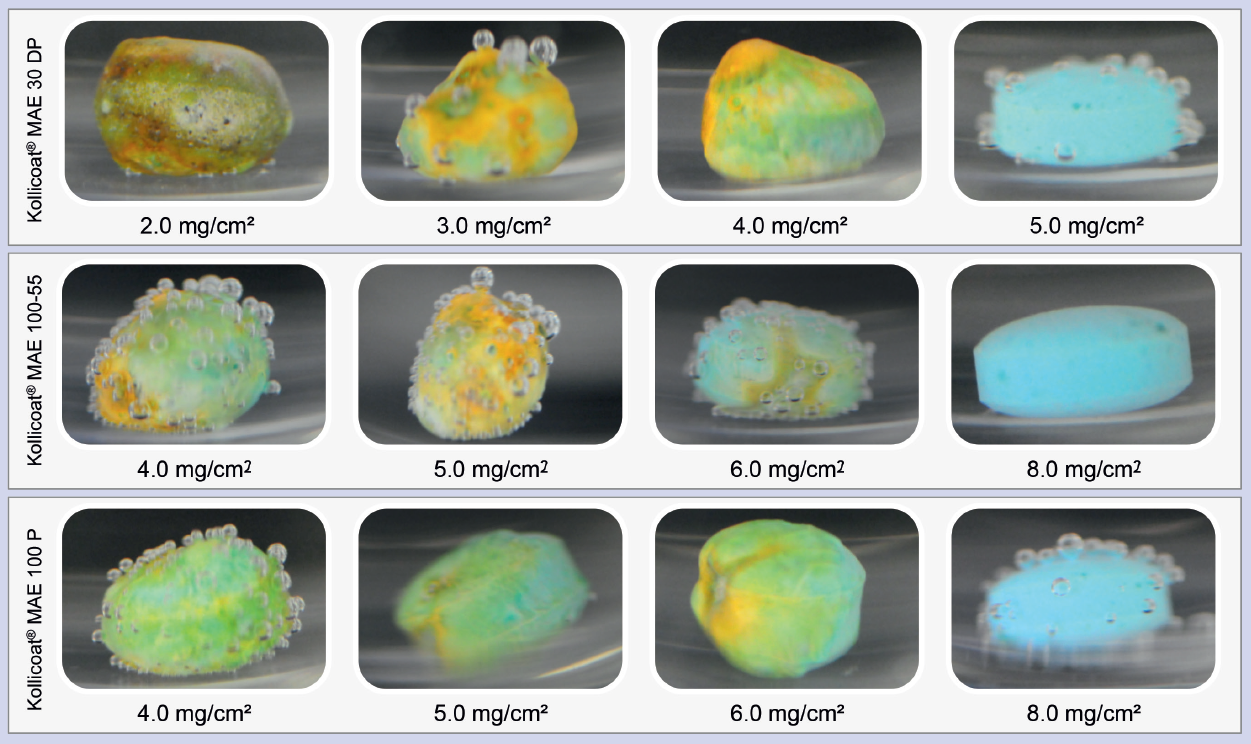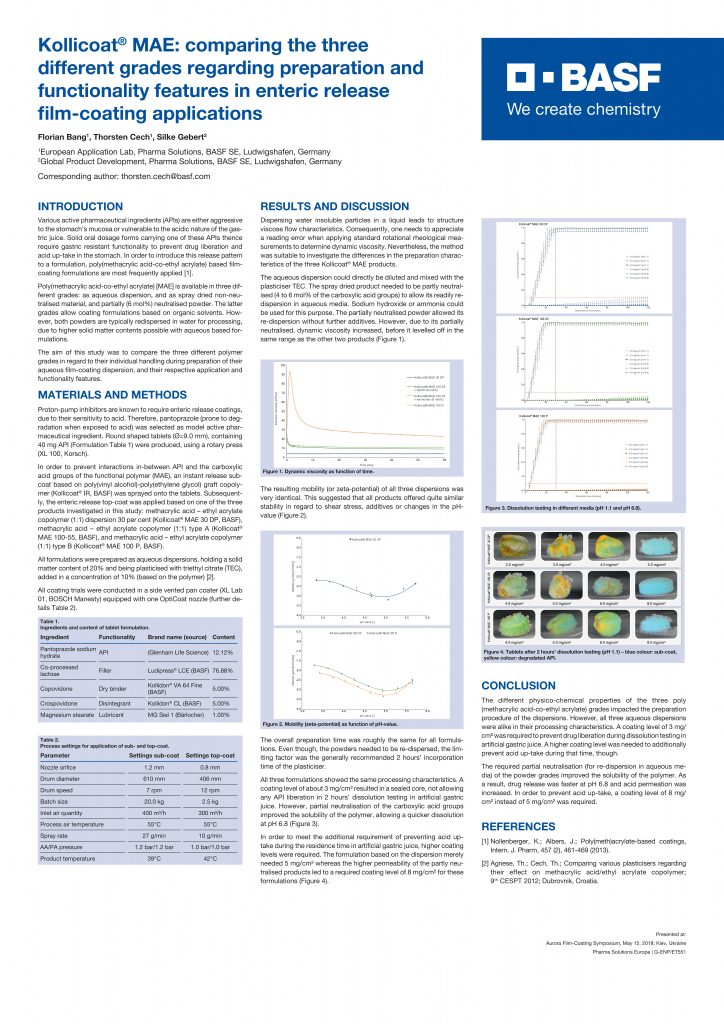Kollicoat® MAE: comparing the three different grades regarding preparation and functionality features in enteric release film-coating applications

Various active pharmaceutical ingredients (APIs) are either aggressive to the stomach’s mucosa or vulnerable to the acidic nature of the gastric juice. Solid oral dosage forms carrying one of these APIs thence require gastric resistant functionality to prevent drug liberation and acid up-take in the stomach. In order to introduce this release pattern to a formulation, poly(methacrylic acid-co-ethyl acrylate) based filmcoating formulations are most frequently applied.
Poly(methacrylic acid-co-ethyl acrylate) [MAE] is available in three different grades: as aqueous dispersion, and as spray dried non-neutralised material, and partially (6 mol%) neutralised powder. The latter grades allow coating formulations based on organic solvents. However, both powders are typically redispersed in water for processing, due to higher solid matter contents possible with aqueous based formulations.
The aim of this study was to compare the three different polymer grades in regard to their individual handling during preparation of their aqueous film-coating dispersion, and their respective application and functionality features.
Click image to enlarge:
See also our interview with Dr. Ferdinand Brandl from BASF on ZoomLab™. Dr. Brandl answered our questions on the idea and start of ZoomLab™. He also gave us an overview on the next modules and the development in the next year. See our interview here.



